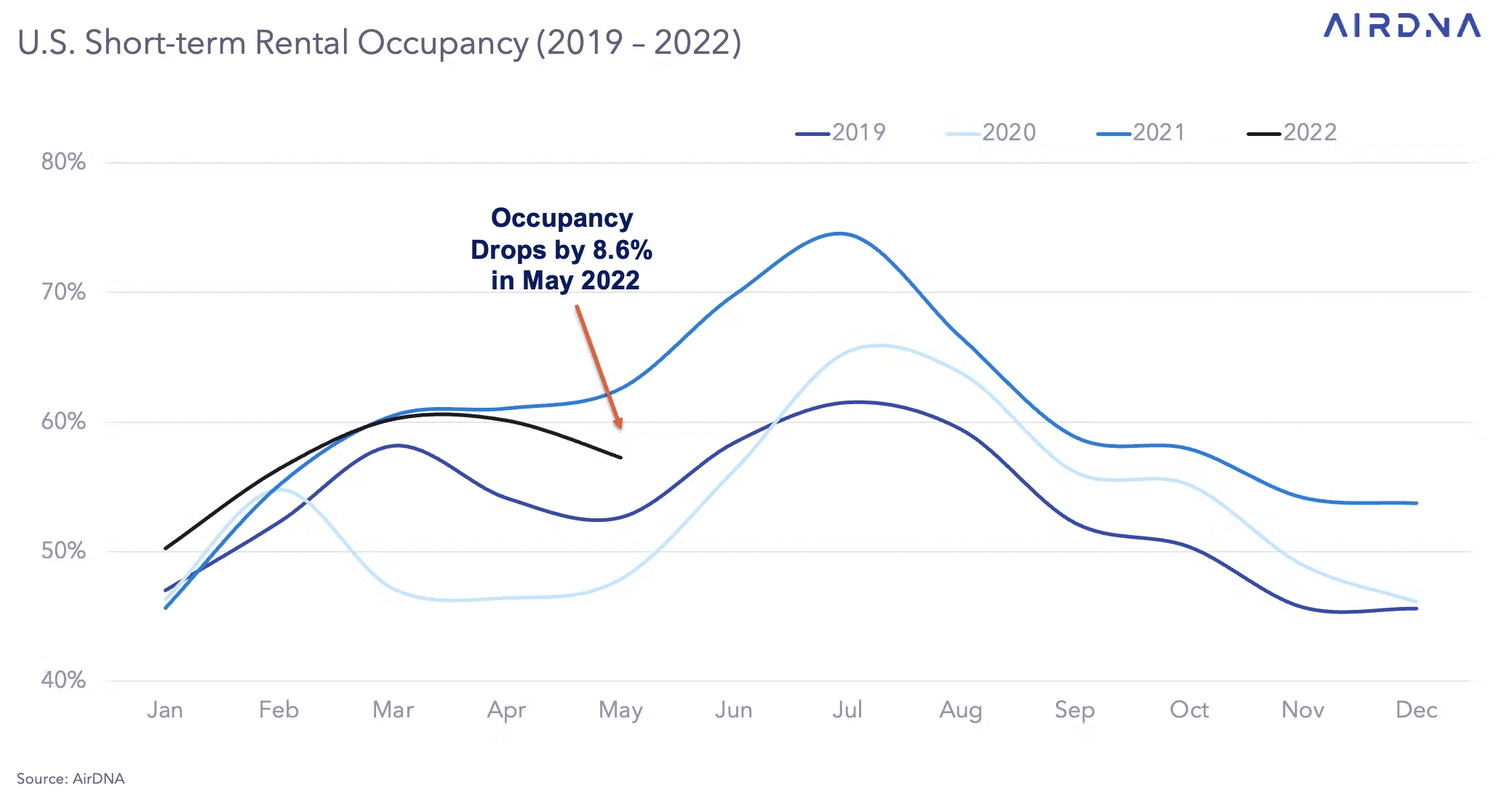If you don’t want to fall prey to this type of split-up pricing, you’ll want to hear what Alexi, David, and Mindy have to say. Using this type of “interest-free” credit could put your financial freedom in jeopardy—and no one wants to trade early retirement for a new swimsuit.
Mindy:
Welcome to the BiggerPockets Money Podcast show number 312, Finance Friday edition, where we talked to Alexi Horowitz-Ghazi about the buy now, pay leader program.
Alexi:
In the early years of credit cards that led to problems with overconsumption and spending, problems with fraud, that then led to the regulatory framework that now is just kind of normal to us. And so this feels like a new type of consumer technology that’s also started with individual businesses targeting individual demographics and is now expanding. And now the traditional financial institutions are like, “All right, we’re going to start offering versions of this to compete.” But there hasn’t been a full regulatory reckoning. So we’re still in that leading edge moment of kind of new technology.
Mindy:
Hello, hello, hello. My name is Mindy Jensen and joining me today is my military millionaire cohost David Pere.
David:
What’s up? I know, I’m supposed to say something super profound.
Mindy:
That’s okay, you don’t have to.
David:
The sky is blue, because science.
Mindy:
Wow. That’s not why the sky is blue at all. David and I are here to make financial independence less scary, less just for somebody else. To introduce you to every money story, even the ones that I don’t love. Because we truly believe financial freedom is attainable for everyone, no matter when or where you are starting.
David:
Yeah, whether you want to retire early and travel the world, or go on to make big time investments in assets like real estate or start your own business, we’ll help you reach your financial goals, get money out of the way so that you can launch yourself towards your dreams.
Mindy:
David, today, we are speaking to Alexi Horowitz-Ghazi from the NPR podcast, Planet Money. He recently released an episode about the buy now, pay later program, which is also called the point-of-sale loan program. And holy cannoli, I’m going to give you a spoiler right now. I don’t like this program. And I want to talk to Alexi about it because I think he’s got a lot of great insights into this concept and he was the first person to introduce me to this particular idea. I didn’t even know it existed until I listened to his episode. And I was like, “Whoa. That sounds like trouble.”
David:
Yeah, it definitely feels like it’s targeting people who are… I want to say, less well off. But it’s not something that billionaires are running around using. I feel like it’s targeting people who are a little bit less financially educated and they see it, psychologically, as an easy way to purchase something that they want. And it seems like it would be very easy to fall into the trap of doing this too much, and then being just completely overwhelmed.
Mindy:
The exact problem that the heroine of Alexi’s story, that released on his podcast, fell into. She discovered that she could buy this item and it wasn’t this giant price. It was this small price a bunch of times. And she’s like, “Oh. Well, that’s practically nothing. It felt like monopoly money.” So then she goes and does it again, and again, and again. And at the end of the month, she’s like, “Oh, I’ve made a big mistake.” What is that quote from Arrested Development? “I’ve made a huge mistake.” So it feels like people who use the buy now, pay later program are going to be quoting Joe Bluth a lot.
David:
Hopefully not, but.
Mindy:
Please tell me that you got that.
David:
Of course.
Mindy:
Alexi Horowitz-Ghazi is a host and reporter for NPR’s Planet Money and is drawn to tales of unintended consequences. He recently released an episode about the buy now, pay later companies, which are also known as point-of-sale loans. This is a special episode of Finance Friday because I think this is a crisis in the making. And people who are using the service aren’t educated on the downsides. Alexi, welcome to the BiggerPockets Money Podcast. I’m so excited to talk to you about this.
Alexi:
Hi, Mindy. Hi, David. Thank you for having me. It’s a pleasure to be here.
Mindy:
I want to thank you for bringing up this topic. Because until I listened to your episode, I had no idea that this thing even existed. I am definitely not the target market for the buy now, pay later companies. So let’s just give an overview about this again. What is the buy now, pay later program?
Alexi:
Okay. So buy now, pay later is a relatively new kind of consumer credit. They’re basically installment loans that are offered to consumers at the point-of-sale. So at the checkout, if you’re buying clothes, or an increasing number of things, airline tickets, even like gas and IRL. It started out as an internet phenomenon, but it’s growing to more and more parts of the economy, including at the real life checkout.
Mindy:
Oh. Oh, that’s even worse.
David:
Yeah, that’s very interesting. I can’t imagine the idea of like, “Oh, I can’t afford gas. So let me stretch the payment out for three months.”
Alexi:
Yeah, yeah. It’s grown to all sorts of different services and products that you can buy. Initially, these companies were relatively narrowly targeted at retail sites for people who either had thin credit histories or bad credit, or otherwise couldn’t gain access to other forms of consumer credit potentially. And so it was pitched as a democratizing way to get people the money they needed now and give them this new way of paying it back later. Generally, the way that works is they’ll front you the money for whatever you’re buying, and then you pay it back in four interest-free installments through whatever their platform is, depending on what the company is. There are other types of loans. There are longer loans with different kind of terms and conditions. But that’s the basic model, is paying for interest-free payments.
Mindy:
Okay. In your episode, you spoke with Amelia who started down the buy now, pay later path by buying a brown and white tie-dye bikini. And I can see this in my head, “Oh, that’s so cute.” But it was a $200 bikini, which makes my frugal heart break. She noticed, when she went to check out, that there was this buy now, pay later option and she clicked it. And she now had the option of paying in four installments of $41.99. And she’s like, “Well, I can do that. I can get $41.99. It’s no big deal.” And I instantly thought of layaway. Alexi, I’m not sure how old you are but I’m very old. And we had layaway. We didn’t have this fancy internet thing when I was growing up, we had layaway. But we didn’t get the items with layaway. You go to the store. You give them all the things you want in the special layaway department, and they put it away for you and you make payments.
Mindy:
I remember I bought a pair of peach overalls that were very hot in 1987 on layaway. And it took me… I had to drive to the store every week for four or five weeks to write out a check or pay cash $20 a week for this. But now, it’s this easy click and it’s not as real. I mean online purchases already don’t seem real because it’s just… My credit card is already in the system. All I have to do is put my fingerprint on my little fingerprint sensor on my keyboard, and now I just made a payment. That’s even less real than having to type in my credit card number at the site. Like it’s so easy to make a payment now. And now I don’t even have to pay the whole amount. I can pay it in four easy installments. This just seems like… This is where to me the crisis is in the making. Because this isn’t regulated, right?
Alexi:
It does. These services kind of fall into a few different regulatory schemes, depending on whether they are run by banks. And regular credit card companies have basically been responding to this new wave of buy now, pay later services which started taking customers from them, taking credit card transaction money from them. And they responded and said, “We can’t leave all of this money on the table, leave this whole consumer group without an option from us if they’re going out and spending money this way.” Ones that are run by banks fall under a different set of regulatory laws. The kind of distinct buy now, pay later companies interact in various ways with credit card regulatory systems.
Alexi:
But it’s still not clear which of those they’re meeting. And so there’s now been this wave of calls for at least investigation from regulators. So the Consumer Financial Protection Bureau started an inquiry last year into how these companies fit into the existing regulatory structures. If there are any rules that they aren’t meeting, if there are new rules that need to be devised to make them safer for consumers. And the House Financial Services Committee also held a hearing on this question last year, last fall, I believe, looking into that question. So it’s still a bit opaque, honestly, what regulations do or don’t apply to them in which they’re hitting, which is part of the reason that this is of concern to a lot of consumer advocates.
David:
Yeah, absolutely. Is there any data as far as how this is impacting different people from different economic backgrounds?
Alexi:
As far as I’ve seen, I don’t have a kind of demographic breakdown. Definitely the pitch to businesses as to why they should accept this type of payment type is because they’ve seen a large adoption by millennials and zoomer consumers. Millennials, for a while, there were kind of seen as less interested, a little more reluctant to use traditional consumer credit products like credit cards. People raise in the wake of the financial crisis, and so this was pitched as an alternative that doesn’t quite a way to get credit, that doesn’t quite interact with the existing credit system.
Alexi:
So you don’t need necessarily very high credit scores to get access to these services. And whatever you do on them for the most part up until now, whatever loans you’re taking out at the point-of-sale are not being reported to credit bureaus. It’s not designed to impact or relate to your credit score. So it’s like credit without the baggage of the current credit system is how it’s pitched. And so the initial uptake in these products were amongst those demographics, but that’s expanded as they’ve gone mainstream in places like Walmart and Target. And a lot of major airlines are now offering these buy now, pay later payment systems at checkout.
Mindy:
Is there anything predatory or detrimental about this practice? I mean, to me, I am… I don’t know if you could tell, but I’m not a fan. I think this plan, this program is… I’m the host of the BiggerPockets Money Podcast. I have my financial stuff together. I can see that a 0% interest loan would be awesome. Why would I pay now when I could pay later and it doesn’t cost me anything? But I’m also responsible with my credit. I can see that this would be really awful for somebody who doesn’t understand the negative consequences of their misactions.
Mindy:
I, in the past, have missed a credit card payment. I remember missing one credit card payment because the statement didn’t come. I’m really old. This was back when we didn’t have the internet and they would just send it to you in the mail, and things would get lost in the mail. And I remember six years later I was getting a mortgage and the mortgage person was like, “Well, what about this missed payment?” I’m like, “What are you talking about? I never miss a payment.” But there are people who don’t understand how this affects you. And you mentioned that it’s not necessarily set up with the credit system, but they are reporting the negatives. When you miss a payment, that’s being reported in many cases. You’re just not being reported when you’re making the payments. So in that regard, it kind of seems predatory on people who don’t know what they’re doing. I don’t know how to phrase that.
Alexi:
I think it’s a hugely mixed bag at this point. I think consumer credit technologies, including credit cards are in part… The point is that it enables people to spend money. The problem comes when people are spending too much money, or get into cycles of spending and revolving debt that make it impossible to dig themselves out of. That’s been true of credit cards and other forms of consumer credit, as much as it is of buy now, pay later. Of course, with credit cards, that stuff happened in the ’50s and ’60s and in the ’70s. A whole series of consumer protection laws were passed that has curtailed some of the outrageous spending and fraud that came about in the wake of credit cards being this new technology for people to buy whatever they want, with the idea that they would pay for it later.
Alexi:
So it’s kind of a similar thing, we’re in an earlier stage of this technology and we’re watching it play out. In terms of the credit reporting, it is true that for the most part, the way a credit bureau would hear about what you’ve been doing using buy now, pay later services would be if you have been unable to meet multiple payments and then defaulted on your payments. So some of those are sent to credit bureaus. So it is easier for there to be a negative effect from these products on your credit score than for there to be any sort of positive. There’s at least one buy now, pay later company that is kind of… To differentiate themselves, they’re offering a way to report your positive payments, making your payments on time to the credit bureau. So there definitely is like a niche in this space to do that.
Alexi:
In terms of the predatoriness or not, it’s hard to make a call about that. There are particular parts of the design that worry consumer advocates. Our protagonist in our story, as an example of this. Part of the pitch from buy now, pay later companies to merchants when they’re saying, “Use our payment service,” is that it causes this kind of psychological trick by making the purchase price of something look a bit lower or feel a little bit lower when you kind of… It’s something that you see in late, late night infomercials, or whatever. Like, “Four payments of 19.99.” There’s something about seeing a lower ticket, even though it’s attached to installment payments and it’ll be following you in the future, that makes it feel a little bit cheaper or at least you’re not depleting all of your income right in the moment. And so you feel like you can make those payments as they come up.
Alexi:
One of the big problems that people point to is that because this isn’t being reported systematically to the credit bureaus, and these individual buy now, pay later companies are not telling each other about your loans with them. There’s no communication here. You could take out a buy now, pay later loan from four or five different companies. And all of a sudden you’re keeping track of four or five different individual payments. Or maybe if you did multiple purchases with each of those, it can kind of turn into this very confusing rotation of various payments that are coming in at different times. And there’s no credit scoring net that’s going to keep you from spending more and more.
Alexi:
There is a kind of internal system within each of the companies that presumably limits the amount that you’re spending. When you apply to buy something through buy now, pay later, generally, they’ll often run a soft credit check. So they’ll look and see what your credit history is. But a soft credit check means that it won’t impact your credit score. Then they have different kind of algorithms that they use to also determine whether they should give you a loan. And then they’ll set a kind of initial spending limit. So they’ll say like, “You can only spend $200 with us.” And once you have proven yourself through that purchase to be dependable by making three or four of your installment payments, they’ll up your limit. So there’s kind of like an internal credit system within each of the companies. But because they don’t communicate, you can easily get into trouble if you’re going on a shopping spree like our character did.
David:
It’s like the exact opposite of asymmetric returns. It’s like you’re investing and you’re like, “Oh. I might lose 10% on this, but my upside is up to 200%. So that’s a win.” This is like the exact opposite, where it’s like, “Hey, they don’t report anything if I’m doing great. But if I mess anything up, it’s going to bite me.” So there’s not an upside for your credit score, but there’s definitely a downside.
Alexi:
Yeah. I will also say, generally, it doesn’t seem like the kind of standard model is based around nailing you on late fees or getting you into a fee trap structure from what I found and from what researchers I saw found. The main thing about this business model, and this may shift as more and more companies take it up and the larger economics change. But right now, they’re able to do this because they’re convincing enough people to buy more stuff and it actually makes sense for merchants to pay higher fees to adopt these services, to offer these services.
Mindy:
That was going to lead into my next… Or that does lead into my next question. The consumer, when they’re using this program correctly, essentially gets an interest-free loan. But in your episode, you mentioned that it costs the retailer 4 to 9%, which is almost double the going rate of credit card charges, which sounds like it would be a negative program all around. But the result when the consumer is spending less in their monthly payment, is that they’re buying more, they’re spending more overall. So the hero of your story is Amelia. She bought a $200 bikini, but it was really only $41. And then the next day she went out shopping again and she bought sneakers and jeans and sweatpants, and her total bill was going to be like $20 or something. And she’s like, “Well, that’s practically free.” “It feels like monopoly money,” I think is the quote that I got from her.
Mindy:
One time is, okay, no big deal. Let’s say she used this and paid $200 for a bikini and made her four payments, and then she was done. And this was like the bikini of her dreams and whatever. I don’t want to say no big deal. I don’t want to say understandable. But that’s not a financial detriment. I think in the story you even asked her, “Did you learn your lesson?” And she’s like, “I still spend. I still buy stuff online.” And I think that it’s going to be… We’re talking about people who aren’t my age. We’re talking about people who have grown up with the internet. They grew up with your life being online all the time. When I was growing up, the phrase was “Keeping up with the Joneses”. That’s just a phrase. But we have a TV show called Keeping up with the Kardashians, and you see their big, beautiful, glamorous life where they have all this amazing stuff. And you’re like, “Wow, they must be happy because they have all this stuff.” So if I have all this stuff, then I’ll be happy too.
Mindy:
And spoiler alert, they have problems just like everybody else. Money doesn’t buy happiness. But when you’re 19 or 25 and you’ve been living in COVID for two years, and you’re not going anywhere, seeing anything. And all you see is this fake life that people are showing you online, you can think, “Oh, well, if I just had that brown and white bikini, then my life would be perfect.” You’re not going to be happy when you have a brown and white bikini, because that’s not the thing that’s missing from your life. So don’t go out there and… I’m not a reporter. I am definitely biased. And I hate this program so much because I just think it’s awful for people who don’t know what they’re doing, and that’s exactly who they’re aiming at. I asked you kind of a leading question, “Is there anything predatory or detrimental about this practice? Is there anything not predatory or good about this practice?”
Alexi:
Well, I was going to just say on the first point, one of the things that feels a little bit dastardly is the way that these have been so seamlessly interwoven with different kind of social media and influencer culture in a way. Our protagonist Amelia found out about this because a lot of the influencers who she follows and aspires to become, were plugging this new technology from a few different companies in their videos. They would do these haul videos, which are when they try on a bunch of different outfits, they order a bunch of different clothes, tell you which ones they like, how they fit. These kind of shopping videos essentially and then they provide a list of where you can buy the things. And now they offer this new payment system there, which was a big part of the strategy of targeting people in this demographic.
Alexi:
So there definitely is something to be said for like this is targeted for people who generally don’t have a high degree of financial literacy. And so there is like an even higher potential for problems there. That said, I think it’s not… As far as I can tell, there is definitely promise here, right? If you’re somebody who doesn’t have access to other forms of credit and you use these things according to their terms and conditions, there’s a way that you can use this to smooth your consumption in a way. Instead of using payday loans and taking on extremely high interest rates that get you into a debt cycle to make a purchase when you’re waiting for your check to come in. If this is an alternative to that, it is pretty promising. In that like you’re going to buy one thing, if you follow the terms and conditions, you can pay for it, and you’ll get the money later down the line and be able to make the purchase even though you didn’t have the immediate amount to spend.
Alexi:
So as an alternative to other forms of consumer credit, I think there is definitely a promise here. There’s going to be a trade off when it is integrated into the existing consumer credit scoring system I think. Because the way it’s designed right now, if you were just to straight up report these types of purchases to a credit bureau, there are all sorts of things that would make it problematic. Because each time you’re making a purchase with a buy now, pay later service, you’re essentially taking out a new little loan, and you’re taking out the maximum you possibly could take out on that line of credit. So what that would look like on a credit reporter to a credit bureau is like a ton of new loans all the time that are maxed out.
Alexi:
There’s maybe a benefit if you’re paying them off consistently. But basically, the credit bureaus need to figure out a way to actually make sense of this data and make it so it’s not like entirely detrimental immediately if it’s reported to them. And as far as I can tell, that sort of stuff is in motion. This kind of movement of the broader financial system to try to make sense of this new product. But yeah, my takeaway was there are definitely a ton of pitfalls. There are easy ways to get into trouble with this, as there were with credit cards, as there still are with credit cards, if you’re just deciding to charge everything and don’t have the means to pay it back. With credit cards, you’re paying interest. It will negatively affect your credit score as well, which will impact your ability to get a car, or get a house, or whatever else. So there are other consequences to going on this type of spending spree with other forms of consumer credit as well.
David:
But you get points.
Alexi:
That’s true.
David:
Okay. So we mentioned if you miss a payment, then it’ll get reported and it can hurt your credit. But is there any other kind of recourse, like let’s say I bought myself a $200 brown bikini, because why not? And I made the first 41.99 payment and then I didn’t make another payment. But I already got the bikini and I look wonderful in it. So who eats… I mean, I can’t imagine that the company calls and says, “Hey, please send that back.” I wonder what’s the recourse look like? Does the merchant eat it? Does the buy now, pay later company eat it? Like someone’s getting hosed in that scenario.
Alexi:
Yeah. So one of the appeals to merchants also of the buy now, pay later service pitch is that they’re essentially being bought out at the moment that the customer buys the bikini. They are out. If the person had used a credit card instead, the consumer would have chargeback protections and other consumer protections that come specifically with credit cards because of some of the regulations that were put in place in the ’70s, which means that if they didn’t like it, they could initiate a charge back and that money would be pulled back from the merchants. So there are kind of financial risks to the merchants and annoyances that come with credit cards and some other payment things that make buy now, pay later a little more attractive.
Alexi:
Well, basically we spoke to a few of our listeners. We did a wide call out. We talked to people on TikTok about their experiences with this. From the people that we spoke to, it seemed like if they missed a payment for organizational reasons, like they just… First of all, most of these payments are automatic. So you put in either a bank account number or a debit card number or a checking number, and they auto draw every two weeks or whatever the kind of payment cycle terms are. So generally, it’s not like, “Oh, it slipped my mind.” Is not the reason you’re going to miss a payment. If you don’t have funds in your bank account, from the folks we talked to, it seemed like the… Also, a lot of these services will send you payment reminders the week of, through text and other forms. And then if you’re unable to pay, a few of the people we spoke to said, they set a new deadline basically.
Alexi:
And they said, “All right. You missed this payment, we’re going to charge you a late fee unless you can pay within…” I don’t remember what it was, maybe seven days, or 10 days, or something like that. “If you do that, we’ll waive the fee.” So they’re not even necessarily charging the fee at the first time the payment has dropped. Because their model is not really about getting you into a cycle of fees. They want you to be consuming more to be boosting the merchant number so the merchants keep paying the fees. So that’s not really the predatory angle of the model, as far as I can tell. But there is a point at which they will send your payments to collections and potentially sell the debt. So these companies are on the hook as far as I can tell if it were really dropped, and then they can go through the traditional kind of trying to recoup their costs methods which would be collections, which is how it would potentially impact your credit score.
David:
Cool. I mean realistically though. I’m torn on this. I like the way that their business model is charging the merchant for the service rather than the consumer. And there’s not an interest rate and there’s not… It’s essentially the same as swiping your debit card. It’s the same cost, just spread out. And so in some ways, I could see it makes sense. The downside I see is, like we talked about before the show, it’s a tool. And if you, realistically, from basic personal finance stuff, if you can’t afford to buy the item right now, then you probably should just wait to buy it rather than doing this. Because what’s going to happen is you do five or 10 of these things and then for the next quarter, you’re monthly expenses have shot up. And if something comes up, now you’re kind of…
David:
That kind of brings up a weird situation, which is… Let’s say I got crazy and I bought $1,000 a month worth of bikinis. And so now I’m on the hook for $1,000 a month for the next quarter, and then it’ll go away, whatever. But if I’m applying for a mortgage, that’s not going to show on my credit report. So it won’t show on my debt to income. So they may be like, “Oh yeah, totally qualified for the mortgage.” And then I can’t afford the mortgage. So it’s kind of weird… Exactly like what you were saying. It’s because it’s not regulated and they don’t really haven’t figured out what to do with it that it’s like there’s some weird ways to fall through the cracks on this that could help you in some regard. But if you overdo it, next thing you know you’re not even living paycheck to paycheck. You’re like, “oh my gosh. I need this next paycheck so that I can pay all this back to zero,” which is just not a fun spot to be.
Alexi:
As you say, it’s a tool. It is a tool designed to get people to consume more than they would otherwise. And a big part of the appeal is that they’ve targeted this demographic of people who might not have been buying stuff on credit before at all. So it’s a tool, but it’s a tool that preys on people’s desire to consume things, which is maybe a broader problem in society and with credit as a larger engine for our economy, but.
David:
It’s the same psychological tool as why on Sunday, when I was in Walmart getting a toy for my five year old, as we’re doing grocery shopping. And you’ve got, whatever. I don’t know, $10. We’ll say 15. And he points at something and he goes, “Oh, well, that one’s only 14. So can I get something that’s a dollar?” And it’s like, “Well, that’s 14.99.” And that’s a psychological game. So it’s the same thing as like a course being 197 instead of $200. And the funny thing is, that stuff works.
Mindy:
That works on me. That works on you. That works on all of us. I bet it works on Alexi too. Alexi, I don’t want to speak for you but I bet it works on you too. Because you see the one, you don’t see the 97. You don’t round up. You see one.
Alexi:
Yeah.
Mindy:
With one, you round down. It’s practically free because it’s only one. You round a zero. And I’ve used things like this. I do a lot of home improvements. And I go to Home Depot, I swipe my card. And if you use the Home Depot Credit Card and you spend X amount of dollars, you get no interest 4, 6, 12, 18, or 24 months. And I make sure that I pay that off before the end of the promotional period. Because if I don’t, then I owe the entire amount of interest on the entire purchase for the entire time even if I only have $5 left at the end of the thing. So I make sure that I definitely pay that off before it’s due.
Mindy:
But that’s an interest-free loan. I would much rather spend $2,000 over the course of 24 months than right now, because I can then go spend $2,000 at Lowe’s as well and buy more stuff. So I can identify with what they’re doing, but also I can afford to buy the 2000. I’m just choosing the interest-free loan. And I think that’s kind of the difference between the way that I’m using it, which is in a more responsible way than this. This girl, I don’t believe could have afforded the $200 bikini. Or maybe she could have paid $200 for the bikini, but then if she had to, she would not have also bought the shoes and the jeans and the sweatpants and all of the other things. It’s set up and in that way I think it is very predatory. You’re tricking people into paying later these little tiny amounts.
Mindy:
I found an article on sfgate.com about this same concept. Because like I said, until I listened to your episode, I didn’t even know this thing existed. This Celesta from the Bay Area, she’s a fashion influencer on TikTok, said people almost like brag or joke, “Oh, it was only 24 payments of $20.” Or, “I got it with Afterpay so it’s technically free.” No, it’s not free. Even if you’re paying $1 for 47 payments, that’s still $1 for 47 payments. It’s only free if it costs you $0 forever. And it doesn’t cost you $0 forever.
Mindy:
I wanted to do this episode and talk to you more about this because I think there’s a lot of people out there who have no idea that this program even exists. And I can see a lot of people who… Because they don’t know what exists, they don’t talk to their children about it. I would have not talked to my children about this because I didn’t know that existed until very recently. And now this is another thing I have to teach my kids not to do, unless they can use it in the way that it will benefit them. And that is to buy things that you were already going to buy and then just spread out the payments. But only if you do it all the way through. I just don’t see a lot of upside for most people with this program.
Alexi:
Yeah. The other thing to mention is that a lot of these companies now become kind of like marketplace platforms. So you can actually go shopping or they’ll send you… You can go shopping through their platforms essentially. So it makes another kind of avenue, another app on your phone through which you can go and find deals and use their service.
Mindy:
No.
Alexi:
So that’s another thing people should be aware of if they’re thinking about downloading any of these apps. And that’s also brings up one other thing. The CFPB is also looking into what type of data is being harvested from people’s phones, and whether and how that’s being sold and packaged. So that’s not clear yet, but because it’s such a kind of digital technology because it potentially interacts with other apps on your phone, like what is tracked is not exactly clear yet. So that’s another thing regulators are concerned about and looking into.
Mindy:
Well, and it’s not all wine and roses for these companies right now. I noted that Klarna just announced that they’re laying off 10% of their workforce, and a firm has lost nearly three quarters of its stock value since the beginning of the year. I mean we’re recording this at the end of May where everybody’s lost a ton of their stock value. So I can’t really say that that’s all due to this. But some of these companies are being sued in California saying that they’re acting like lenders, so they should be registering as lenders and then being regulated as lenders. So I think there’s a lot of… What is it? It’s a learning time and an exploratory time to try and figure out. Because I think it’s kind of funny that Silicon Valley moves so fast and then the stodgy lawmakers have to scramble and catch up. Do you remember when Mark Zuckerberg was in front of Congress and one of the Congress people was like, “Can you tell me why my iPhone does this?” And he was like, “I don’t work for iPhone.”
Alexi:
Those are my competitors there.
Mindy:
Yeah. They don’t understand what’s going on. And because they don’t understand what’s going on, they don’t know how to regulate it. And so it’s this… I’m so flustered, because I’m so frustrated because we don’t have financial education in school. My daughter is a freshman. Tomorrow’s her last day of freshman year of high school. And with her entering class, her high school class is the first class in Colorado that is required to take financial education before she graduates. And she has to take a whopping half semester, and I’m like, “Oh, well, don’t put yourself out.” I don’t even know what they teach in this whopping half semester, which doesn’t come until her junior year. And by that time, she could have already gotten herself into a whole bunch of debt with this stupid Klarna and the firm and Afterpay.
Alexi:
There’ll be four new buy now, pay later and other types of financial technologies we haven’t heard of yet by the time.
Mindy:
Exactly. Exactly. Okay. So the moral of this story is talk to your children about credit and how buy now, pay later, and all this online shopping, and all this craziness. Because you can get yourself into a world of financial hurt even when you think that it’s monopoly money. “I had no idea that I had to pay this, and it’s technically free because it’s only a dollar.” It’s not only anything unless it’s only zero.
Alexi:
Yeah, interest-free does not mean free.
David:
They should make a net worth requirement for teaching that financial class. Because it’s kind of ironic that you know that whoever’s teaching it probably they took a class in college and they may or may not actually know anything about finances. But at least they’re trying, which is cool. You mentioned something, Mindy. I was trying to figure out how to word this. But the idea that they should be regulated as lenders is interesting when you consider that… Like they’re not lending you funds, they’re not charging you interest, and they’re not charging you fees.
Mindy:
Well, what about a mortgage? When I go and buy a house, the mortgage company doesn’t hand me $500,000 and say, “Okay, now go give that to the title company.” They send it directly to the title company, who gives it to the person who pays off their mortgage. This is the same thing.
David:
That’s true. They charge points in interest and fees. So it’s like… Yeah-
Mindy:
Still loaning you the money.
David:
… it’s like this weird loophole that’s just hanging out over here like, “Oh I hope no one sees us.” Like, “Please don’t regulate us Mr. CFPB.”
Alexi:
Yeah.
Mindy:
Well, but they’re point-of-sale loans. Buy now, pay later is a point-of-sale loan. And just because they’re not charging interest, doesn’t mean it’s not a loan. They are giving somebody money on your behalf so that you can buy something that you don’t have enough money to pay for outright, or that you’re choosing not to pay for outright. So that…
David:
You’re right.
Mindy:
Yes. Wow. Could you say that again? I didn’t hear that.
David:
My mic suddenly stopped working. I don’t know what’s happening.
Alexi:
Buy now, pay later is a way of describing any loan also. I mean whether you’re buying the house now and paying for it later, or a car, or anything else, it’s kind of baked into the concept.
Mindy:
Yes, but this is… Now we’re kind of splitting hairs, but I see what you’re saying. Yes, credit cards are buy now, pay later in installments and I don’t have to pay the whole thing all at once. But it’s different.
Alexi:
Yeah, it’s revolving instead of installment basically. They both use fees. But credit cards depend on those interest payments as well to be profitable, whereas this just gets the money for the moment from a different place for the most part. Even though buy now, pay later companies do offer longer installment payments for interest. So they act a little bit closer to what a traditional credit card.
Mindy:
I wonder how they would act if they were regulated like lenders are. If they had to follow all the same rules, would they change their tune? Would they change the way that they behave? I mean they would have to change the way that they behave. I wonder if they would still exist as many of them.
Alexi:
Right. Well, the other thing we didn’t mention too, is that it’s actually even gone beyond personal finance consumer, or it’s beyond consumerism or shopping or something. Now it’s spread to, you can pay for some types of medical bills or dental bills or small business financing or home improvement. You could take out a kind of buy now pay later loan to do some of the work you were describing, going and doing yourself at Home Depot. So it’s expanding to become a model for other types of act of commerce basically.
Mindy:
I think it could have its place, but I think we need to enact more regulations around it. And I really am hesitant to say that because the government’s really good at screwing things up. But I think that they need to do something so that there’s more laws in place so that you have to follow all the same guidelines. So there’s not just this loosey goosey, whatever.
Alexi:
Yeah. Well, one last thing I’ll say is that to me, it felt really reminiscent of kind of the way that credit card spread and were ultimately adopted and then regulated to some degree. Credit card started as, maybe in department stores or to particular business. You had credit within one business. And then eventually, a few of these networks came together to make cards that they could convince merchants across the economy to use and become interchangeable to make universal cards. And then there were all sorts of preposterous ways they tried to get people to use them.
Alexi:
They mass gave out credit cards in people’s mailboxes. And there was all sorts of ridiculous shenanigans in the early years of credit cards that led to problems with overconsumption and spending, problems with fraud, that then led to the regulatory framework that now is just kind of normal to us. And so this feels like a new type of consumer technology that’s also started with individual businesses targeting individual demographics and is now expanding. And now the traditional financial institutions are like, “All right, we’re going to start offering versions of this to compete.” But there hasn’t been a kind of full regulatory reckoning. So we’re still in that leading edge moment of kind of new technology.
Mindy:
Wow. Yeah, I think that’s a really good point. That’s a really good comparison that you’re making. I can see the parallels. That’s very interesting. Well, I’m excited to see how this goes. I’m excited to see some regulation coming, and I don’t really think that that’s going to come anytime soon. So if this is something you’re planning on using, the buy now, pay later, just do it with extreme caution and read the fine print. Oh my goodness. Read the fine print of this thing that you’re doing before you do it. Put it in the cart and then walk away and think about your purchase. Do you really need that brown bikini? David, you would look smashing it and it goes with your beard. But do you really need 20 of them?
David:
No, no, just two or three.
Mindy:
Okay. Alexi, this was so much fun. I really appreciate your time today sharing your thoughts about this program with us. And I appreciate you bringing this up just in general because this episode was really, really, really helpful to keep me informed of all the new crazy financial shenanigans that Silicon Valley is coming up with. I can’t wait to see what else they come up with.
Alexi:
It’s an exciting new world. Thank you guys so much for having me. It’s been a pleasure.
Mindy:
Okay. We’ll talk to you soon. All right. David, that was Alexi Horowitz-Ghazi from NPR’s Planet Money. I really enjoyed talking to him. But I do not like this program, this buy now, play later. I think there’s a lot of potential upside where people could use it responsibly, but like credit cards, like other loans, people are going to use it negatively. And I just think that there’s not enough regulation around it and it’s targeting people who don’t have enough education. But then even as I say that, I’m thinking, “Well, yeah. But what about credit cards? People get themselves into problems with credit cards. Why don’t I have such a problem with credit cards or other types of loans?” I don’t know what it is about this particular program, maybe because it’s in its infancy and there’s no regulation around it. But I don’t like this nearly as much as I’m okay with credit cards and other things, because points.
David:
Yeah. The lack of regulation is definitely something to… I don’t want to say worry about, but to be aware of. And then I think the other thing that got me on this, as far as just not being a fan, is the fact that if you use it, there’s absolutely no upside to your credit or your credit history, or anything of the sort. But if you fail to make a payment, then there is a downside. It’s the exact opposite of what you want as an investor. You want very minimal risk, massive upside potential.
David:
This is very little gain other than whatever item you want, and massive downside potential. Not to say that it’s a terrible… I mean they’re not charging fees, they’re not charging points or interest. So there are worse options out there. But, I would say if you’re looking at doing this, maybe the better bet is to just put that $45 away for four months and then buy it at once. And then you don’t have to worry and run the risk of someone messing with your credit because of a missed payment, or whatever. And then hey, three months, four months down the road, if you still want it, then cool. Go buy it. And if you don’t, then you’ve got 200 bucks that you can now invest.
Mindy:
What a great idea. Save for the purchase instead of making the purchase and scramble to make the payments later. I love it. That was a good point, David. Okay, should we get out of here?
David:
We should.
Mindy:
From episode 312 of the BiggerPockets Money Podcast. He is David Pere and I am Mindy Jensen saying, “Take care, polar bear.”
























